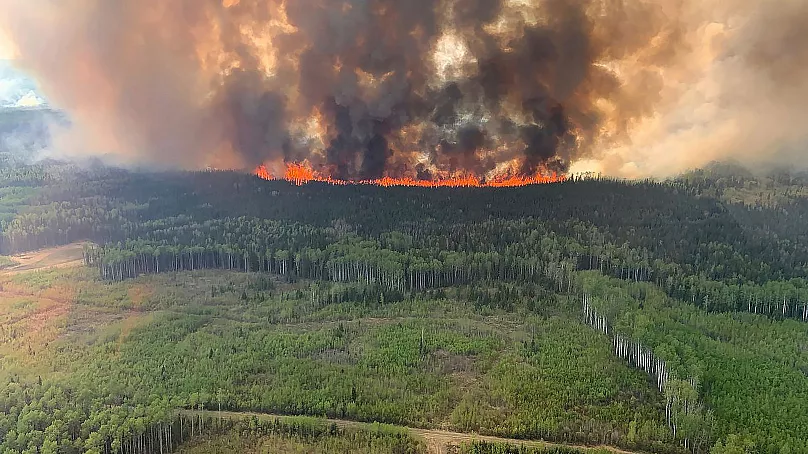By: Andy Gao
Joshua Iserhoff, a member of the Cree nation of Nemaska, was forced to evacuate from his home in Northern Quebec due to wildfires. However, he could not escape along the road, as the fire blocked their passage. The wind was very strong and almost picked up their car. With his wife and two children, he was able to turn around and find another way out. He called the drive a “traumatic experience.” (New York Times, 2023)
In early July, wildfires ravaged rural northern Canada and cut off transportation to Indigenous communities. The region’s only paved road, known as the Billy Diamond Highway, has been covered by flames and smoke. Many Indigenous communities have faced life-changing impacts from the wildfires.
On June 1, a lightning storm started a forest fire near Radisson, Quebec. The wildfire is still burning to this day and is now two and a half times the size of the largest ever recorded wildfire in California.
Since May, 47,000 square miles of forest have been burned. The wildfires have displaced more than 25,000 Indigenous residents across Canada, from British Columbia to Nova Scotia.
Many Indigenous communities have been evacuated for weeks at a time, sleeping in hotels and gyms. Some communities had to flee multiple times. “I’ve never seen that level of evacuation in Cree Nation, simultaneous communities all at once,” said Mandy Gull-Masty, the first woman elected grand chief of the Cree Nation in Quebec. (New York Times, 2023)
In July, eight of the 9 Cree communities in Quebec were placed under evacuation orders, with thousands of people airlifted to safety. In some communities, older people, young children, and people with health issues were bused along hundreds of miles of gravel roads to reduce the impacts of smoke.
On an 11-hour evacuation bus, William Wapachee, 79, had trouble breathing. He had lung cancer and was taken by ambulance to a nearby hospital. “Before, if we had fire, it was only in one place. Now it seems to be a fire here, a fire there, fire everywhere,” stated Wapachee. (New York Times, 2023)
So far, Canada’s Department of Indigenous Services has paid $55 million to Indigenous communities affected by wildfires. Many wildfires have taken place in remote areas, where Indigenous communities live and utilize the land. Although they depend on forests for food and live in the area, their land is not seen as a firefighting priority since they have few buildings and fewer people.
These wildfires have damaged the forest ecology and cultural heritage of Indigenous groups in Quebec, but the government has yet to do anything. Their land is in the vast northern region, where the government’s policy is to let wildfires burn unless they threaten towns or other infrastructure. “I don’t think these fires will stop until everything is burned. These fires are here to stay until fall gets here — or the snow,” stated Kurtis Black, the fire chief of Nemaska, a Cree nation. (New York Times, 2023)
Many Indigenous groups have fought back against the government’s policy. “Our territory doesn’t have a super high population, and we don’t have a lot of infrastructure that needs to be protected. But for us, our territory is our infrastructure,” stated Ms. Gull-Masty. (New York Times, 2023)
Quebec’s Wildfire Agency defended its actions in an email as necessary because of limited resources.
Canadian wildfires are not only affecting Canada, they are affecting the United States as well. With 1,000 fires burning across Canada and 600 being out of control, they have set records for the amount of land they burned. They have also sent vast amounts of smoke into the United States. In June, hazardous levels of smoke pollution affected the eastern parts of the United States.
Wildfires should be something taken seriously, as they have affected lives across the United States and Canada, especially Indigenous groups living in rural Canada. These wildfires have pushed Indigenous residents off their land and have jeopardized their lifestyle and their livelihood.
Sources:











